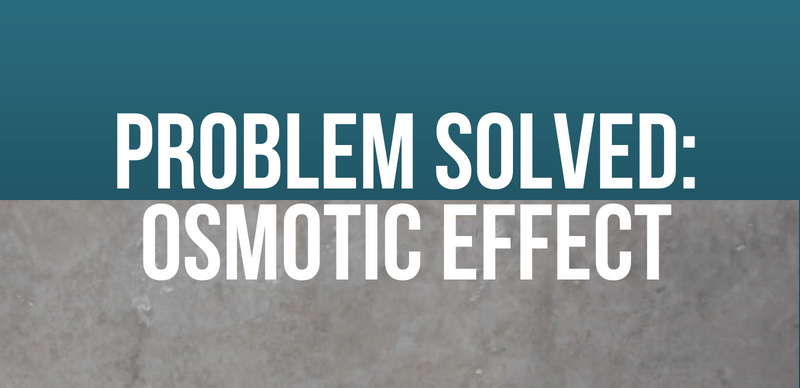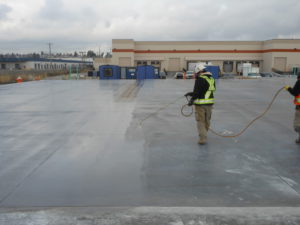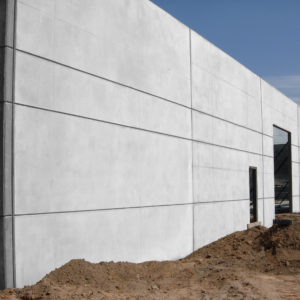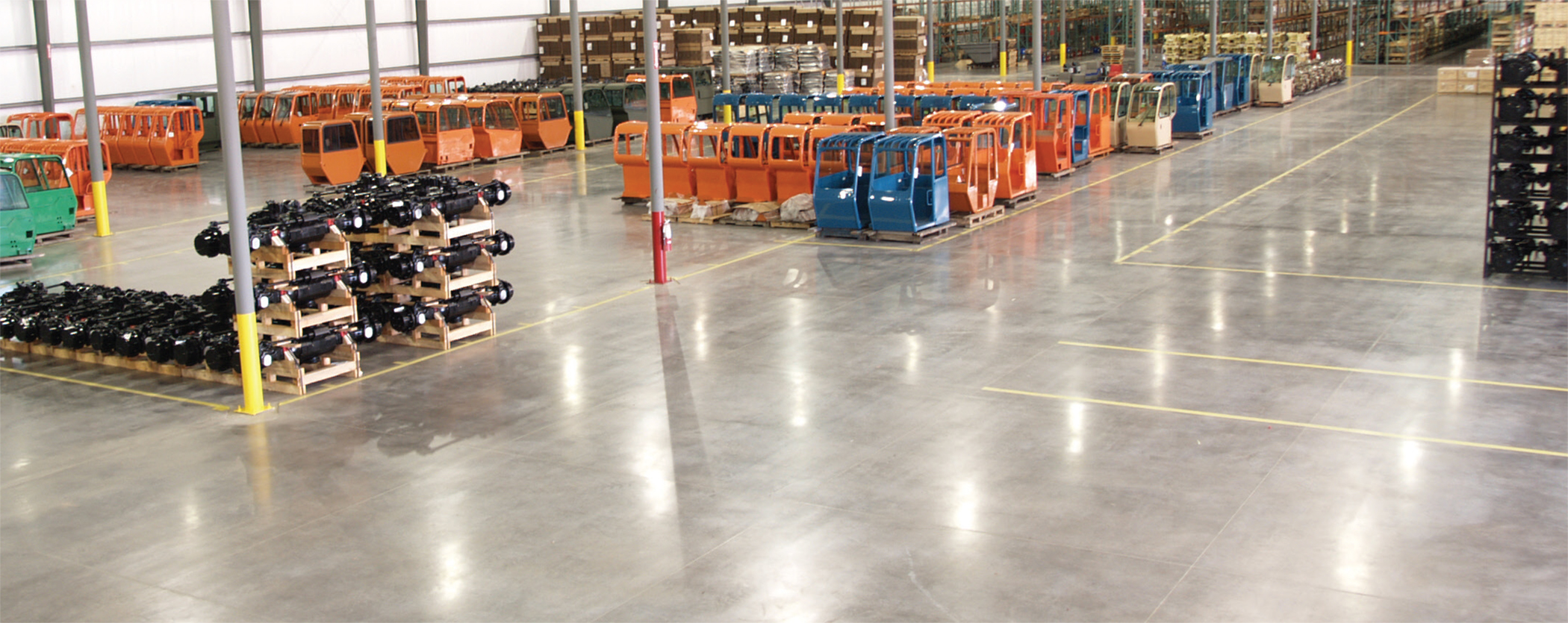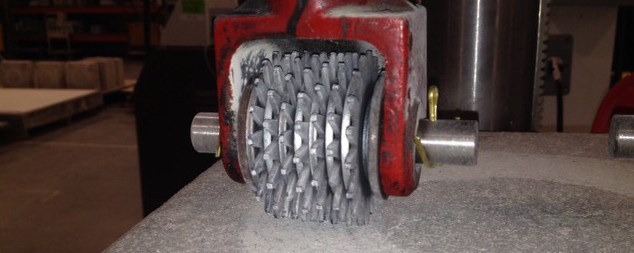by Craig Coppersmith, P.E., VP Technical Sales & Marketing
Nox-Crete strives to create the highest quality chemicals for the concrete industry, and to consult with architects, engineers, contractors and distributors regarding the use of our products and their impact on the maintenance of concrete. Our goal is to ensure that those products enhance both the performance and appearance of concrete floors.
Recently, there has been much discussion in the concrete construction industry regarding the phenomenon of sweating floor slabs (commonly referred to as Sweating Slab Syndrome) in warehouses and distribution centers. There are multiple factors that have been suggested to contribute to Sweating Slab Syndrome, including trace amounts of reactive bondbreaker that may remain on floors in casting areas.
Understanding and sharing in the concerns about Sweating Slab Syndrome, the Nox-Crete team set out to verify that our Silcoseal Cure and Bondbreaker could be effectively removed from a tilt-up floor following our standard recommendations for removal, which is cited in our product data sheets. This would validate our recommended processes for removal of Silcoseal Cure and Bondbreaker and eliminate it as a possible contributor to the Sweating Slab Syndrome, by virtue of a proven method for its removal.
To demonstrate that Silcoseal Cure and Bondbreaker  could be effectively removed, Nox-Crete contracted with Nelson Testing Laboratories (NTL)—an independent, certified testing agency—to perform a mock tilt-up using Silcoseal Cure and Bondbreaker and Nox-Crete’s citrus-based stripper, Bio-Clean Concentrate CPC, for the removal.
could be effectively removed, Nox-Crete contracted with Nelson Testing Laboratories (NTL)—an independent, certified testing agency—to perform a mock tilt-up using Silcoseal Cure and Bondbreaker and Nox-Crete’s citrus-based stripper, Bio-Clean Concentrate CPC, for the removal.
Analysis Process
NTL mixed and poured concrete into a 9-foot x 4-foot x 2-inch thick mold. The concrete surface was finished with a steel trowel and coated with two coats of Silcoseal Cure and Bondbreaker, applied at 400 sf/gallon, 24 hours apart. After another 24 hours, a concrete wall panel was cast on top of the original concrete specimen. After another 48 hours, the wall panel was separated from the original concrete specimen.
The exposed face of the concrete casting surface was then sectioned into three equal parts: uncleaned; cleaned with Bio-Clean diluted 1:3 with water; and cleaned with Bio-Clean diluted 1:5 with water.
The uncleaned sample was left untouched. The area cleaned with Bio-Clean diluted 1:3 was stripped with a 1:3 ratio of Bio-Clean Concentrate CPC to water solution, using a nylon scrub brush simulating a downward force of 100 pounds. The area cleaned with Bio-Clean diluted 1:5 was stripped with a 1:5 ratio of Bio-Clean Concentrate CPC to water solution, using a nylon scrub brush simulating a downward force of 100 pounds.
Four 50-gram samples were then extracted from the concrete casting surface—plain concrete; concrete exposed to Silcoseal Cure and Bondbreaker but not stripped with the Bio-Clean solution; concrete exposed to Silcoseal Cure and Bondbreaker and stripped with the 1:3 Bio-Clean solution; and concrete exposed to Silcoseal Cure and Bondbreaker and stripped with the 1:5 Bio-Clean solution.
Methods of Analysis
The four pulverized concrete samples were chemically extracted with η-hexane. To remove all organic substances, 50 grams per each of the four samples were extracted.
The liquid extract from each of the four concrete samples and the liquid samples of the Silcoseal Cure and Bondbreaker and Bio-Clean Concentrate CPC were dried on a universal diamond Attenuated Total Reflectance Accessory (ATR) for Infrared Spectroscopy, then analyzed using a Perkin Elmer Spectrum Model One Fourier Transform Infrared (FTIR) Spectrometer, with a configuration of resolution of 4 cm-1 and eight accumulations (number of scans) per sample.
Samples Received for Analysis
Six samples were analyzed:
A) Bio-Clean Concentrate CPC (liquid sample)
B) Silcoseal Cure and Bondbreaker (liquid sample)
C) Plain concrete not exposed to Silcoseal (50 g. sample – pulverized concrete)
D) Concrete exposed to Silcoseal, not cleaned (50 g. sample – pulverized concrete)
E) Concrete exposed to Silcoseal, stripped with 1:3 ratio of Bio-Clean Concentrate CPC to water (50 g. sample – pulverized concrete)
F) Concrete exposed to Silcoseal, stripped with 1:5 ratio of Bio-Clean Concentrate CPC to water (50 g. sample – pulverized concrete)
Extraction and Infrared Spectroscopy Analysis Results
Evidence of the presence of Silcoseal Cure and Bondbreaker was not found in three of the pulverized concrete samples (Samples C, E & F). However, Sample D, the pulverized concrete that was exposed to Silcoseal but not cleaned, contained a detectable amount of organic extract, indicating the presence of Silcoseal─as expected.
Both of the stripping solution ratios (1:3 and 1:5) of Bio-Clean Concentrate CPC to water effectively removed the Silcoseal Cure and Bondbreaker.
The infrared spectra of both of the extracts from Samples E & F show a sharp absorption band around 1100 cm-1 (frequency), which is due to the presence of the Bio-Clean. Organic substances from the Silcoseal Cure and Bondbreaker are not evident in the spectra of Samples C, E & F, but are evident in Sample D.
Summary: Nox-Crete’s Interpretation of the Analysis Results
Proper surface preparation will remove all trace amounts of Silcoseal Cure and Bondbreaker and its heavy metallic soaps from concrete tilt-up floors. If no Silcoseal Cure and Bondbreaker residue remains on the tilt-up floor, it cannot contribute to Sweating Slab Syndrome.
NOTE:  These independent tests were only conducted on Nox-Crete-branded products. It is unknown whether other brands of reactive bondbreakers can be successfully removed.
These independent tests were only conducted on Nox-Crete-branded products. It is unknown whether other brands of reactive bondbreakers can be successfully removed.
The most effective way to remove Silcoseal Cure and Bondbreaker residue is with Nox-Crete’s Bio-Clean Concentrate CPC. Nox-Crete recommends taking these steps to remove bondbreaker residue from concrete floors:
- Dilute Bio-Clean Concentrate CPC 1:1 with water for stripping heavy coatings. For removal of lighter coatings,dilute with a ratio of 1:3.
- Uniformly apply by sprayer or through an automatic floor machine at an application rate of 200-300 sf/gal (5-7.5 sm/L).
- Allow product to dwell on the floor surface for 20-30 minutes while aggressively scrubbing the surface with an automatic floor machine equipped with nylon scrub brushes.
- Squeegee the surface clean and rinse thoroughly with water.
Follow these links to learn more about Nox-Crete's line of Silcoseal Cure and Bondbreakers and Bio-Clean Concentrate CPC, or call our customer service team at 402-341-2080.
 chemical solutions to concrete problems
chemical solutions to concrete problems
